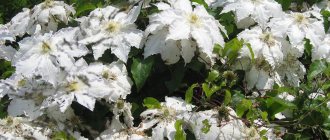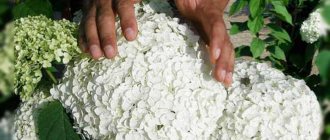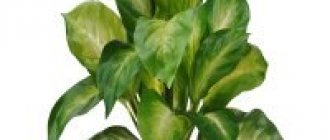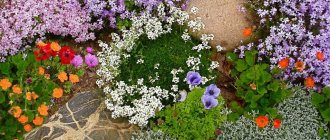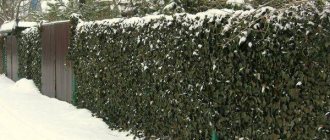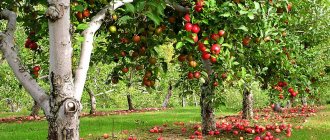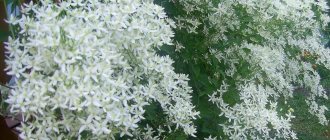Category: Types, Succulents Published 03/09/2019 · Comments: · Reading time: 7 min · Views: 1,133
The familiar succulent plants that live on many window sills are considered by many to be exclusively tropical thermophiles, unable to tolerate significant cold snaps. However, this opinion is correct: most of the succulents I know moved into the houses and greenhouses of domestic flower growers from hot Africa or arid Mexico.
However, there are other representatives of the flora that are capable of storing moisture in leaves or stems, for which a comfortable development environment is low temperatures and low air humidity. They are successfully cultivated in flower beds and alpine hills, and even left to overwinter, covered with spruce branches or dry leaves.
Succulents for open ground
All types of succulents have various devices on the surface of their leaves or stems with which they retain moisture. So, according to the method of moisture accumulation, these plants are divided into two varieties. Stem - moisture accumulates inside the stems, thereby causing them to expand and thicken in the form of a ball or bottle. Leafy species accumulate moisture only in the leaves.
Spurge
Euphorbia is native to northern Africa and is widely used as an ornamental and medicinal plant. It contains a specific milky juice that can irritate the skin. The inflorescence has leaf wrappers with a specific yellow-green color. There are species with red and yellow flowers. Plants tolerate both direct sunlight and partial shade. The genus Euphorbia contains about two thousand species, which are represented by perennial herbs and shrubs. Some of them are poisonous.
Euphorbia Mile
Rejuvenated
It is a perennial groundcover plant that is capable of forming an oval and spherical rosette of dense consistency. The leaves of Molodilo are quite fleshy, oblong or ovoid in shape. From the base of the rosette of the plant there are many stolons, which contain daughter rosettes. Peduncles are formed 14-15 cm long with small thyroid-shaped inflorescences of white, pink and red colors. The succulent blooms during June and July, after which the rosette dies off completely. Juvenile is characterized as a cold-resistant and drought-resistant plant that requires sufficient sunlight. Ideal for growing in group compositions or alone in containers and borders in garden beds.
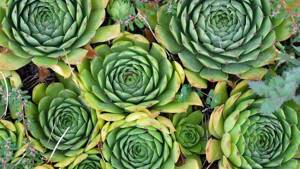
Sedum
A perennial succulent with fleshy leaves and star-shaped flowers, which are collected in umbellate or corymbose inflorescences. Due to its unpretentiousness to the weather and climatic conditions of the growing area, it has become widespread on all continents. The leaves have a flat structure and a cylindrical shape. The arrangement of leaves on the stem is regular. Sepals and petals completely free at the base. Sedum has a very beautiful decorative form. The length of the stamens is twice the length of the petals. There are many species with high winter hardiness, so feel free to plant these succulents in your dacha.
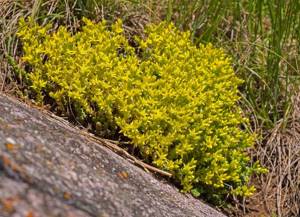
Sedum succulent – Saxifraga
Levisia
A low herbaceous perennial plant. Levisia's leaves are elongated-ovate with wavy edges. The leaves are quite thick and dark green in color. The flowers of the succulent form a few-flowered inflorescence up to 4 cm in diameter. The flower petals are pink or pinkish-lilac with light edges and barely noticeable thin longitudinal stripes.
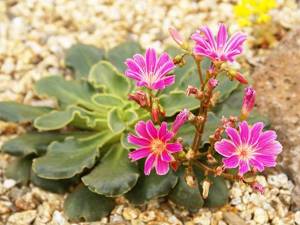
Bacopa
A sun-loving plant that is unpretentious to the soil. The stems are quite thin with a tendency to lodging. The leaves are very small, ovate and broadly elliptical in shape. The leaf color is green or olive green. The leaf margins have jagged edges. Flowering occurs throughout the summer. The flowers are small, tubular and bell-shaped. The perianth consists of 4 or 5 symmetrical lobes of white, blue or light blue. It is characterized by weak winter hardiness and tolerance to waterlogging of the soil, so such succulents in the country must be prepared for winter. Propagated by cuttings. In summer it is used for landscaping various reservoirs, and in winter it is perfect for use in aquariums.
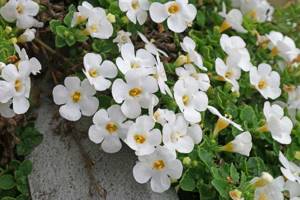
Ragwort
The ragwort includes various forms: trees, vines, herbaceous plants. The inflorescence of a succulent is a basket that is similar to a dandelion or chamomile. After flowering, flying seeds quickly form in the inflorescence. Raspberry is distinguished by its unpretentiousness in cultivation. Prefers well-lit places and needs several feedings. Propagated by seeds and cuttings. Raspberry plants cannot withstand severe waterlogging of the root layer. Therefore, when growing in the garden, it is worthwhile to carefully choose a place for planting Raspberry.

Meadow cruciferous
Delosperma
This plant is native to southern Africa. In nature, there are more than a hundred species of this plant, which can be ground-covering plants or subshrubs. Very often, delosperma is grown indoors. The above-ground part of the plant is capable of growing strongly in length up to 30 cm. The stems branch quite strongly and bend easily to the ground. The root system of delosperma is highly branched and fleshy in shape. The leaves are lanceolate-shaped, curved, reaching a thickness of 3-4 mm. The aerial part is dark green and bluish. The surface of the green parts very often forms crystals of potassium salts.
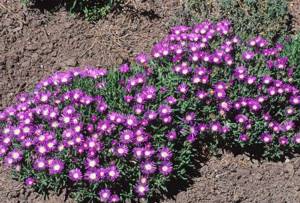
Apthenia
The natural condition for the growth of Aptenia is dry subtropics or semi-deserts. On the territory of our country there are four species, low-growing with tetrahedral stems and fleshy leaves. Peduncles form on the tops of the lateral branches and in the axils of the leaves. Aptenia is very demanding of sunlight. The best way to grow a succulent is as a houseplant. In this case, it is necessary to plant in a loose grain mixture with good drainage. Propagated by stem cuttings throughout the spring.
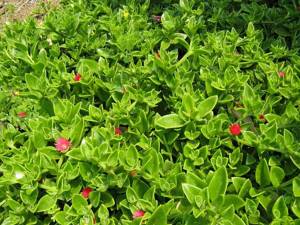
The ten best succulents for the garden
We offer descriptions and characteristics of the best representatives of succulents that will perfectly transform your site.
- Echeveria graceful.This is a bright representative of succulents, which has proven itself well, and therefore has many fans and connoisseurs. The echeveria plant spreads so quickly, forming a thick cover of its plants, that it can even be safely considered a representative of ground cover. The plant is practically undemanding and is ideal for areas where the soil is a continuous barren lump of earth. This plant is not at all picky, so it can grow in the soil, in a flower bed, near a rock garden or alpine hill, but it can also easily become the basis for any composition. Growing in containers in the fresh air is not an exception, but one of the distribution options.
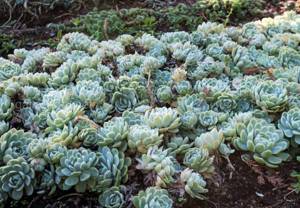
- Sedum Morgana.This is a very popular type of succulent that people decided to simplify the complex name, so most often you can hear about it as “monkey tail”. It's all about his appearance. This is a slightly elongated plant that falls to form thin spikelets. The color has green-blue tints. This type of succulent has not only attractive appearance, but also flowering, which truly decorates the plant with red inflorescences. For a successful growing season, the plant does not require much - sun, warmth, sandy soil with well-equipped drainage - this is the classic secret of successful growing season. Remember, do not touch the plant frequently, as any contact may cause the succulent to lose its leaves. It is from the leaves that fall in the future that a new plant will appear - a unique method of propagation.

- Golden sedum.This type of succulent is very original, since the inflorescences are star-shaped and change color depending on the position. If the habitat is in a sunny area, then be prepared for the plant to acquire a beautiful orange color. The longer it is in the shade, the more greenish the color will be, with a slight yellowish tint. The demand for this plant lies in the fact that its high decorative value is supported by minimal effort in care, since there are no special requirements or criteria.

- Haworthia retracted.This is a well-known succulent that has a very attractive appearance. The surface of the Haworthia plant is leathery. On the lush greenery, a small but beautiful white flowering forms. Experts assure that it is not difficult to grow haworthia, since there are no special requirements, but the decorative value is high. It is noteworthy, but this succulent does not tolerate heavy moisture, so control watering - abuse is much worse than drought.

- Levisia.This beauty is a true connoisseur of partial shade, so sunny plantings are not recommended. For comfortable growth of the Levisia plant, you should completely cover the plant with gravel, creating a kind of mulch layer that will help prevent excess moisture. Growing this type of succulent in the garden is a common practice, but remember that in winter it should be covered with high-quality non-woven material. During the maintenance process, you should remember that it is strictly forbidden to wet the outlet. Water only at the roots and not often.
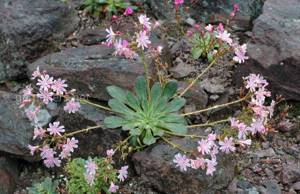
- Stone rose or young.This is probably the most recognizable succulent among all that connoisseurs of beauty are sure to know by sight. The beautiful stone rose does not require any additional attention at all; she is successfully content with what she has. It is noteworthy that the most severe tests - severe frost and severe drought - are not a problem for the young. The only thing this succulent requires is the absence of weeds nearby, so loosening should be an integral procedure for the successful cultivation of a rock rose. The ideal place is a bright and well-lit area that will ensure successful growing season. If the soil on your site is sandy, then you can count on rapid growth and spread of the young throughout the area or flowerbed.
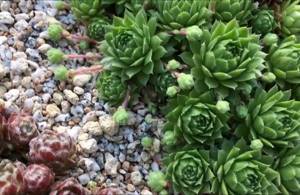
- Delosperma.This plant can be safely classified not only as a succulent, but also as an ornamental flowering plant, because the bright yellow bloom fits so appropriately in tandem with a green plant that many always try to grow this particular representative on their site. The perennial delosperma is capable of growing on a large scale. The ideal place for planting would be a sunny area; avoid shady areas, as this can cause death. Control watering, which will become the main criterion for care. If you grow delosperma outdoors, then take care of shelter for the winter. It is best to place flowerpots with this succulent outside in the warm season, and indoors for the winter.
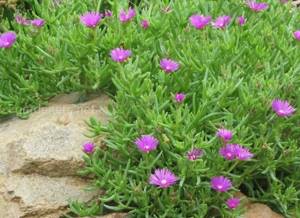
- Bacopa.This is a very beautiful type of succulent that can grow successfully on the site. The bacopa plant has long shoots, which can be used in the decoration of rocky hills, since the hanging shoots will become a real highlight of the area. You can also safely plant this succulent in a flowerbed; it abundantly covers the area, harmonizing well with decorative and ornamental flowering plants. This plant has very beautiful miniature white blooms that look great and harmonize in the context of any planting.
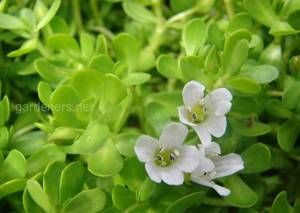
- Sedum.This is a representative of succulents, which is considered low-growing. The stems of sedum are maximally branched, so they can easily form a shrub. The shoots are clearly formed, have a fleshy texture and a green color. The outlet itself can be not only green, but also with a brown tint. This succulent is beautiful because it can transform an area with bright inflorescences. So, white, pink, purple and yellow are the main shades that are inherent in the varieties of this succulent.
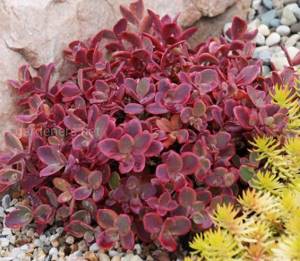
- Apthenia.This bright representative of succulents has its trump cards - fleshy foliage, as well as a very juicy beautiful green color. The spread of the apthenia plant is very strong; one plant can be a whole meter long. This type of succulent has the ability to delight with attractive blooms - pink and red. It is noteworthy that during the day the flower is open, but at night it hibernates and closes.
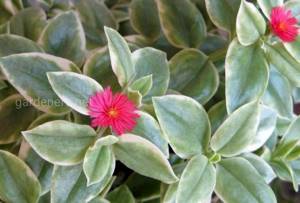
Growing succulents on the site is a very practical solution, since the plants do not require special attention and care, but they are able to grow quickly and fill any territory, rocky areas and poor areas with their beautiful appearance.
Join our Facebook group
Caring for succulents in the garden
In order for succulents to reveal their potential and be able to properly decorate the territory of the dacha, it is necessary to carry out a range of measures aimed at creating optimal conditions for the growth and development of these plants. At the same time, ignoring even one factor can lead to a slowdown in plant development or to their complete death.
Location and lighting
When growing succulents in a summer cottage, you need to be very scrupulous in choosing a growing location. Almost all species need sufficient sunlight throughout the day. Even slight shading can cause a decrease in growth activity. Therefore, you should choose a place on a site without nearby tall trees or various buildings. If succulents are grown as indoor plants, they should be placed on south-facing windows or artificial lighting should be used.
What soil is needed for succulents?
Succulents are not demanding on soil fertility. Therefore, they grow normally even on sandy soils. However, it is better to use more fertile soil for planting, as this will avoid several fertilizing and quite frequent loosening of the surface layer.
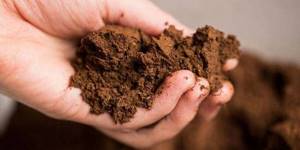
When choosing a growing location, you should not forget about the acidity of the soil, which has its own optimal indicator for each succulent. In addition to soil fertility, it is necessary to take into account its density. Indeed, in highly compacted soils, the root system develops slowly, which negatively affects the development of the entire plant.
An important soil indicator for succulents is humidity. Due to the fact that succulents do not tolerate prolonged waterlogging of the soil, it is necessary that groundwater does not approach closer than 1.5 m to the surface of the earth. When growing succulents as indoor plants or in containers, it is necessary to have a drainage layer below the soil. Therefore, we can say that succulents prefer soils of average fertility with good drainage ability and optimal soil acidity.
How to water succulents in the country and what to feed them with
Succulents are characterized by high drought resistance. In addition, the plants have a fairly powerful root system that is capable of taking water from the lower soil horizons. Therefore, when you grow succulents in the country, the plant does not need regular watering. Only during a very long dry period can one water-recharging irrigation be carried out per season.
It is advisable to fertilize at least three times per season. But for this it is necessary to use exclusively mineral fertilizers.
The use of organic matter has a negative impact on plant development.
It is best to feed succulents using solutions of liquid fertilizers, such as Vympel (12-14 ml per 10 liters of water) or Energen Aqua (11-13 ml per 10 liters of water). The first feeding is carried out at the beginning of the growing season, and the second before flowering begins. The third feeding is needed by plants in the autumn before going into winter.
Photos and names of succulents that you can grow yourself
Due to their fast growth and unpretentiousness, succulents have become quite popular in home gardening.
Agave - a spectacular decoration for large rooms
Agave is a visitor from Central America. In Russia, you can most often find American agave (Agave Americana). This is a large ornamental succulent plant, with a short thick stem and leaves collected in a rosette. Under optimal conditions, their length can reach 1.5 m or more. It blooms at the age of 6 to 15 years, produces a high arrow, 6–12 m long, on which up to 17 thousand flowers appear. This type of agave is used to decorate huge halls and halls.
The more compact Funk agave can be grown in an ordinary city apartment or in a private house. This plant does not take up too much space. Brown thorns grow at the ends of its grey-green leaves. In their homeland, many types of agaves are used to produce ropes and twines, and even wrapping paper. Local drinks, mezcal and pulque, are made from the sweetish juice.
Home healer Kalanchoe
Kalanchoe is another famous succulent that many people grow on windowsills. This is a representative of the Crassulaceae family. The leaves of different Kalanchoes can be sessile or with petioles, strongly or weakly dissected. When the plant blooms, an umbrella with white, purple, yellow or red flowers is formed.
Crassula - money tree
Crassula - this flower is called Crassula by many. Most often, amateur gardeners grow Crassula purslane, which is popularly called the “money tree.”
There is no need to be afraid of faucaria, it is very beautiful
Faucaria is a strange South African plant whose leaves end in growths that look like the open jaws of a predator. This succulent can grow quite large. To create normal conditions, he needs to allocate a lot of space.
Haworthia pearly - small and compact
Those who want to grow smaller plants should pay attention to pearly haworthia. The photo and name of the succulent are above. The look of the plant is very original. And the diameter of the spherical rosette does not exceed 15 cm. The leaves of this succulent are thick, with light wart-like growths.
In the photo with the names of indoor succulents, all the advantages of these plants are visible. Their decorative appearance and the beauty of their flowers make you want to place them at home and watch their development.
Diseases and pests of succulents
The greatest damage to succulents is caused by fungal diseases such as fusarium and late blight. Fusarium affects the roots and gradually affects the entire above-ground part. The main symptom of the disease is stunting of growth and coloration of the plant in a pale gray color. To combat the disease, it is necessary to spray the plants with Fitosporin-M or Fitolavin.
Late blight primarily affects the root collar and subsequently damages the leaves and stems of plants. A sign of plant damage by late blight is the appearance of brown spots. To cure the affected plants, you need to treat the plants with fungicides Ridomil Gold, Horus.
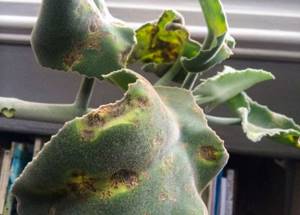
Late blight on succulents
The most harmful pests are aphids and spider mites. Aphids are quickly able to create large colonies, which are located on the lower part of the leaf. These small pests feed on cell sap by sucking the curls of plant leaves. You need to fight aphids using insecticides BI-58N, Karbofos and Metafos.
Spider mites are located, like aphids, on the lower part of the leaf. The mite feeds on plant sap and a growth forms at the site of damage to leaf tissue. If the tick has multiplied greatly, then at the site of its accumulation you can see a white cobweb. To destroy mites, you need to spray plants with the insecticide Karbofos.
Juveniles in a flower garden with succulents
annisannuals.com
The second name of this plant is tenacious. It was honored to be so called for its ability to adapt to any conditions, including climatic and soil conditions. And you don’t even need to root it. Therefore, you can plant it immediately, in any soil or ordinary soil, having previously disconnected the daughter sockets from the mother ones. Juveniles need watering and fertilizing exclusively during dry summers. This flower will be a great addition to your succulent flower garden.
The more nutritious the soil, the faster the juveniles grow, but at the same time they become weaker.
- Strong kids: 15 best low-growing plants for alpine hills and rockeries
What to plant on an alpine hill so that the plants not only feel comfortable, but also look great?
